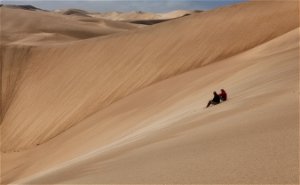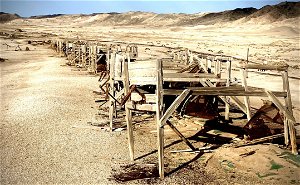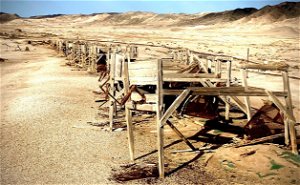Our Adventures
Off-grid adventure travel in the oldest desert on earth - the Namib!
The Namib Desert is one of the driest places on Earth. This Martian-like landscape of towering sand dunes, rugged mountains and gravel plains stretches some 81,000 sq km across three countries. The Namib Desert is the world’s oldest desert and it has been arid for at least 55 million years. The convergence of the Benguela upwelling and the hot interior have maintained, and perhaps increased, this aridity in recent times, but they did not generate the aridity. The region, isolated between the ocean and the escarpment, is considered to be a constant island of aridity surrounded by a sea of climatic change. The arid conditions probably started with the continental split of West Gondwana 130 million to 145 million years ago when this area shifted to its present position along the Tropic of Capricorn. This lengthy dry period has had a profound influence on the region’s biodiversity. The region has remained a relatively stable center for the evolution of desert species. This has resulted in a unique array of biodiversity with high levels of endemism and numerous advanced adaptations to arid conditions.
The Namib Desert is home to a number of unusual species of plants and animals that are found nowhere else in the world. Most of the animals and plants that survive in the Namib do so by unique adaptations.
Dense fogs along the coast and the freshwater they contain are the life essence of the Namib. The dew that condenses on desert grasses and on the bodies of smaller creatures is what sustains many of these animals.
There are almost 70 reptile species in the ecoregion, of which five are found only in the Namib Desert. The desert is also home to a large number of small rodent species that occur among the rocky habitats in the western deserts, in the sand dunes, and in the vegetation of the gravel plains.
Namib-Naukluft National Park, one of Africa's largest, contains a group of huge sand dunes, which at nearly a thousand feet (300 meters) high are the tallest sand dunes in the world.
The interaction between the water-laden air coming from the sea via southerly winds, some of the strongest of any coastal desert, and the dry air of the desert causes immense fogs and strong currents in which sailors easily lose their way. Along with the Skeleton Coast farther north, the area is notorious as the site of many shipwrecks.
The crests of the dunes are aligned in a marked northwest-southeast orientation. These crests form crosswise to the formative wind. The dunes act as obstacles, and obstacles cause winds to be deflected significantly to the right in the Southern Hemisphere—in effect reorienting the southerly wind as a southwesterly wind.
Experience all of this - and more - on any one of our off-grid adventure tours in the Namib between Walvis Bay and the Southern border of Namibia.





Share This Page